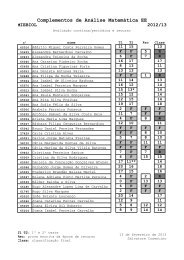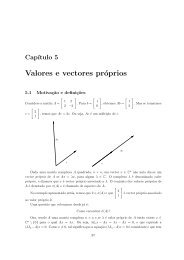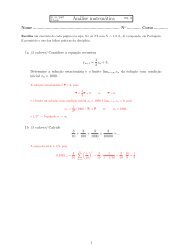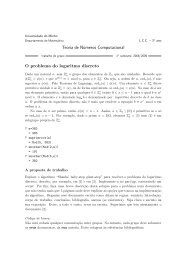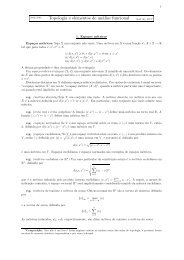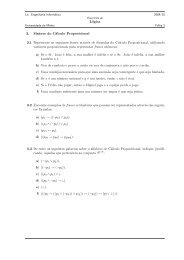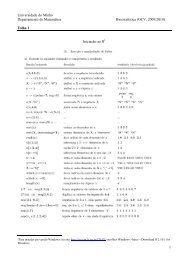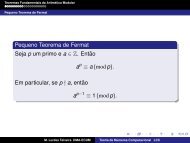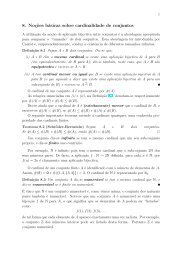You also want an ePaper? Increase the reach of your titles
YUMPU automatically turns print PDFs into web optimized ePapers that Google loves.
56CAPÍTULO 3. SISTEMAS DE EQUAÇÕES LINEARESUx = c, e portanto Ax = b tem solução se e só se Ux = c tem solução. Tal equivale a dizerque o número <strong>de</strong> linhas nulas <strong>de</strong> U iguala o número <strong>de</strong> linhas nulas <strong>de</strong> [U|c]. De facto, onúmero sendo o mesmo, por substituição inversa é possível obter uma solução <strong>de</strong> Ux = c,e caso o número seja distinto então obtemos no sistema associado a igualda<strong>de</strong> 0 = c i , paraalgum c i ≠ 0, o que torna Ux = c impossível. Se o número <strong>de</strong> linhas nulas <strong>de</strong> U iguala o <strong>de</strong>[U|c] então o número <strong>de</strong> linhas não nulas <strong>de</strong> U iguala o <strong>de</strong> [U|c].OctaveConsi<strong>de</strong>re a equação matricial Ax = b on<strong>de</strong> A =consistente se e só se car(A) = car([A|b])[2 2 11 112]e b =[−11]. A equação é> A=[2 2 1; 1 1 0.5]; b=[-1; 1];> rank(A)ans = 1> [L,U,P]=lu(A)L =1.00000 0.000000.50000 1.00000U =2 2 10 0 0P =1 00 1Portanto, car(A) = 1.> rank([A b])ans = 2> Aaum =2.00000 2.00000 1.00000 -1.000001.00000 1.00000 0.50000 1.00000> [Laum,Uaum,Paum]=lu(Aaum)



